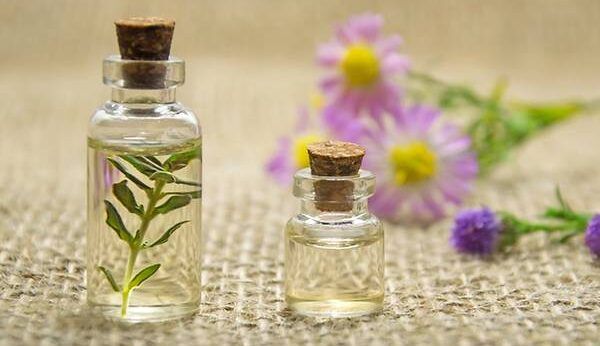Aromatherapy Tips & Tricks
As a sufferer of migraines, Brian Keene LMT, SMART Bodywork® LLC Founder, has been utilizing essential oils to navigate his battle with the invisible anguish in the brain. After much consideration for his health, wellness, nutritional, supplemental diet and vitamin needs, Brian has benefited greatly from Aromatherapy in massage sessions and at-home.
Since we believe everyone should have health and wellness knowledge access that helps them to achieve a better quality of recovery we want to share with you a little bit about Aromatherapy and how to best utilize them in your everyday life.
Benefits of Aromatherapy are:
- Increases blood circulation, stimulating Thermal and olfactory nerve systems
- Reduce stress and inflammation.
- Creates unfriendly environment for bacteria and viruses to live
- Sends specific messages to Lymphatic & Immune System and bloodstream to seek out cellular imbalances
How to Best Utilize Essential Oils For…
Inflammation
Symptoms of inflammation include pain, redness and swelling.
Some good anti-inflammatory essential oils to try are chamomile, lavender, and sandalwood. These reprogram cells for function and proper reproduction.
Other essential oils such as basil, pine and rosemary restore function to adrenal glands.
Ease Deep Relaxation and Insomnia
Sedatives relax our nervous system and our muscles, which ease pain, tension, cramps and muscle spasms. Sedative essential oils to try include lavender, clary sage, geranium and ylang- ylang. Also: chamomile, rose and orange.
Relaxation
Inhalation (1 – 2 drops)*
Only use pure essential oils (without carrier oils) for inhalation
Massage (1 – 2 drops) drops of oil into your hands
Create a hand bridge 6 – 12” over the nose
Instruct client to take 2 – 3 deep breaths, deep inhale through nose and slow exhale through mouth
Diffusers (5 – 10 drops)
Add your favorite essential oil to a candle, burner or electric diffuser and place the diffuser in the room you wish to disperse the scent. If you don’t have a “store purchased” diffuser, you can easily use boiling water.
Below you will find recommended drop quantities for other methods. It is suggested to start with 1 drop of oil at a time until you reach your desired scent. Some oils are heavily scented and it usually takes very little oil to achieve the desired smell.
Lotions (3 – 6 drops)
Mix 3 – 6 drops with an 8 oz. bottle of lotion or cream to be used on the body.
Eye Pillows (1 – 2 drops)
Add 1 -2 drops of Lavender or anything rose-related on a covered or protected eye pillow allows for continuous inhalation throughout the night. ALWAYS use a tissue, soft cloth or another washable protection so the eye pillow itself does not absorb the oil directly.
Cool Compresses (2 – 4 drops)
Add 2 – 4 drops of Arnica or Eucalyptus oil to 1 quart of cool water in a mixing bowl. Soak the compress in the water, wring and apply.
Apply cool compresses when inflammation is present and at any stage acute, sub-acute or chronic. Ex. Forehead to ease headaches.
Warm Compresses (2 – 4 drops) Apply directly to the affected area.
Add Clary Sage or Arnica oil to 1 quart of warm/hot water in a mixing bowl.
Soak the compress, wring it out and apply to tight muscles or areas of chronic pain.
Used on neck, forehead, calf*
*Warm compresses should not be used on areas of inflammation. Only use warm compresses for chronic pain.
Tips & Tricks With Aromatherapy Carrier Oils
Dilute essential oils before applying to the skin to ensure safety, slow their evaporation and/or absorption rate, and increase the surface area to be covered.
Use the finest quality available and make blends in small amounts. Essential oils mostly lose therapeutic value due to poor storage, but won’t go rancid. Carrier oils will. When purchasing carrier oils, estimate the amount of oil you think you’ll use within the lifespan of the essential oils.
When blending a carrier and essential oil, use 8 – 12 drops of essential oil to 1 oz. of carrier oil. The ratio you make depends on the individual using the specific blend.
How Should I Be Using Essential Oils?
Healthy adults are 8 – 12 drops of essential oil to 1 oz. of carrier oil.
For Seniors or chronically ill, cut essential oil down to 4 – 6 drops.
- Chamomile – Muscle Relief & Joint Pain, Break down uric acid deposits surrounding joints, calms nervous system
- Eucalyptus – Use in low quantity, Anti-inflammatory, Muscle Relief & Joint Pain
- Lavender – Anti-inflammatory
- Marjoram – Analgesic, Antispasmodic, Anti-inflammatory
- Rosemary – Contains antioxidants
What Are Considered Carrier Oils?
Most Popular Carrier Oils: Almond, Avocado, Coconut, Grape Seed, Jojoba, Sunflower
Other Carrier Oils Include: Aloe Vera, Evening primrose, Macadamia, Olive, Peanut, Pumpkin seed, Rosehip, Safflower, Sesame, Sunflower, Walnut
ALWAYS keep track of drops used, along with the specific carrier oil you are using.
NEVER use mineral or petroleum jelly as carrier oil. Both can clog pores, prevent toxins from being eliminated through the skin and block essential oils from being absorbed.
Suggestion Use in circular motions on reflexology points
Additional Individual Medicinal Properties With Each Carrier Oil
All carrier oils have their own INDIVIDUAL medicinal properties.
Carrier oils range from non-existent to pungent.
Make sure your carrier oil works well with the essential oil you are using and it doesn’t overpower it.
If you have any questions, please don’t hesitate to reach out to Brian Keene, LMT at:
